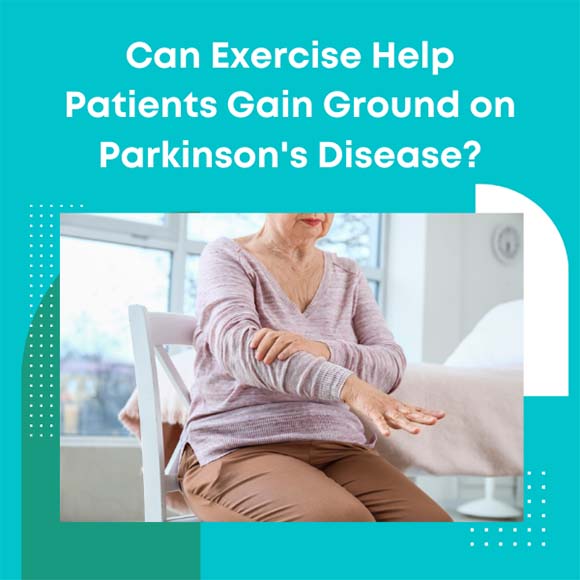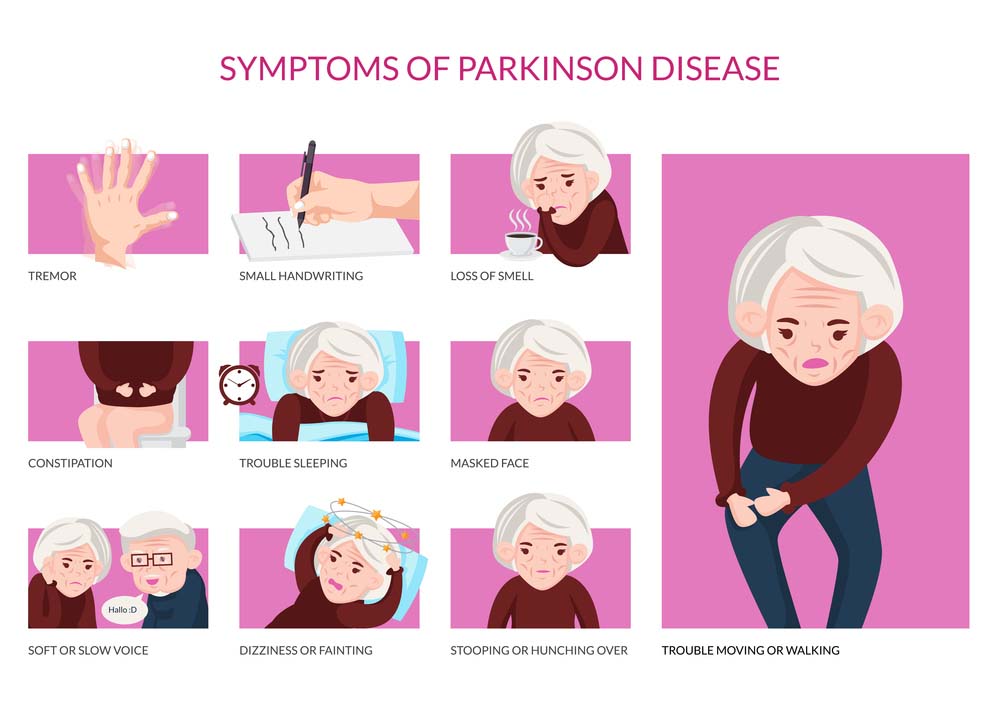Can Exercise Help Patients Gain Ground on Parkinson’s Disease?
Dec 19, 2022

Parkinson’s is a disease that affects 1 million people in America and 10 million worldwide. Parkinson’s disease (PD), is a neurodegenerative disorder that affects a specific part of the brain. While there is no cure, there are many drugs that can be used to treat symptoms. In addition to drugs, movement and exercise are now commonly prescribed as part of the standard of care. Let’s discuss how exercise can help Parkinson’s patients.
Can Exercise Help People With Parkinson’s?

Symptoms of parkinson disease
Most clinicians agree that exercising in some form can be helpful for managing the symptoms and progression of Parkinson’s. Parkinson’s symptoms are mostly movement-related and include difficulty walking, a loss of balance, tremors, and rigid limbs. Practicing movement can therefore help to combat these symptoms. However, that does not mean that exercise is a cure or can be used as a replacement for Parkinson’s medications. Exercising regularly may, however, lead to the ability to take lower doses of certain medications.
Benefits of Exercising with Parkinson’s

Exercising with Parkinson’s can help delay the onset of symptoms as well as manage symptoms. Here are some of the main benefits of exercising with Parkinson’s, especially early into your diagnosis:
What Studies Suggest
There have been several studies that point to exercise helping patients with Parkinson’s. One, The Parkinson’s Outcomes Project, shows that people who start exercising earlier after their diagnosis for at least 2.5 hours per week experienced a slower decline in quality of life compared to those who start later.
Further Research
Another study, SPARX2, showed that patients who followed an exercise regimen of 30-minute sessions on the treadmill four days a week showed a slower advance in the disease than a control group with no exercise regimen. A new version of the study might point to how intensely people with Parkinson’s should be exercising.
What Kinds of Exercise Can People With Parkinson’s Do?

Depending on how far your Parkinson’s has progressed, some kinds of exercise might be more attainable than others. Additionally, you should only do exercise that is approved by your doctor. Always make sure that you exercise safely, and with a partner if possible. Working with a physical therapist is another option. However, many options are available to you.
Pick an Activity You Enjoy
When deciding what exercises you would like to practice, it’s best to pick something you enjoy doing. This will make it easier to stick to a routine and motivate yourself on days you do not feel like exercising.
Aerobic Exercise
Participating in an aerobic exercise – which engages the heart and lungs – 30-40 minutes per day at least three days a week can help slow the progression of Parkinson’s. Examples of aerobic exercise that you can do include:
Strength Training

Strength training uses weights, resistance bands, or your body weight to build muscle mass and strength, which can help combat some physical symptoms of Parkinson’s. Strength training can be done about two times per week. Consider starting with low repetition and low weight, or simply body weights. Focus on the muscles in the back of the body to help with posture.
Flexibility Training
Flexibility training, such as stretching, can help people with Parkinson’s maintain their range of motion and posture. Hold stretches for about 30 to 60 seconds. They should not hurt you but might feel mildly uncomfortable at first. Working with a physical therapist is a great way to design a stretching regimen that works for you.
Balance and Agility Training
Balance and agility training usually combines several kinds of exercises and can help people with Parkinson’s maintain their coordination and balance. Examples of balance and agility training include:
How Hard Can You Exercise With Parkinson’s?

How intensely you exercise will depend on where you are in your journey. Exercising with greater intensity can have greater benefits, according to the Parkinson’s Foundation, especially if you are in the early stages of the disease. Intense exercise means exercise that makes your heart rate increase and your breath heavy. However, intense exercise may not be the best option for everyone, so speak to your doctor and your physical therapist about what intensity level is best for you.
How Often Can you Exercise With Parkinson’s?
Studies have shown that it’s best to be consistent with exercise, no matter how often you choose to do it. For example, if you decide you want to exercise four times per week, you should try your best to stick to your schedule. Consistency can be very helpful, so it may be best to sign up for a several-month-long program. You can find Parkinson’s-friendly groups in your area by searching online.
Exercise With Others
Exercising with others can not only be a safe option for people with Parkinson’s but can also help motivate you and increase your socialization. Socializing with others can help prevent depression and other symptoms of Parkinson’s. If you join a group, you’ll also have some built-in accountability.
How To Get The Most Benefits of Exercise

In order to get the most out of your exercising, it’s best to be consistent, do a variety of types of exercise, and start early on after your diagnosis. However, it’s never too late to start exercising. You may have to ask for more support from family members, caretakers, or physical therapists. No matter what you choose, be sure to reach out to a physical therapist before you begin and look into local programs in your area.
For informational purposes only.











